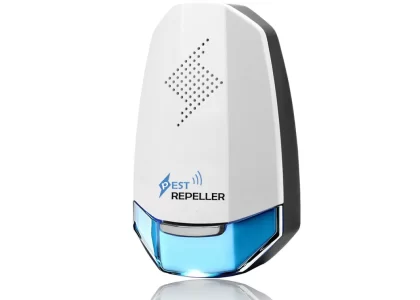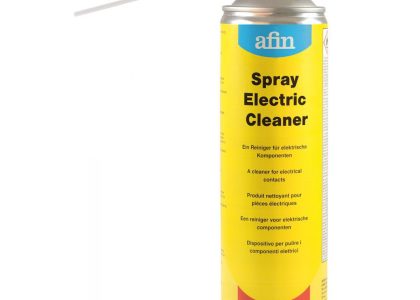 Introduction:
Introduction:
How to wash a comforter in washing machine?
Washing a comforter in a washing machine can be a convenient way to keep it clean and fresh. However, it’s important to follow the proper steps to avoid damaging the comforter or the washing machine. In this comprehensive guide, we will provide a simple and easy-to-follow step-by-step walkthrough on how to wash a comforter or other things such as shoes in a washing machine. By following these instructions, you can effectively clean your comforter and ensure its longevity.
 Introduction to Washing a Comforter in a Washing Machine
Introduction to Washing a Comforter in a Washing Machine
How to wash a comforter in washing machine?
Washing a comforter in a washing machine allows for convenient and thorough cleaning.
A. Importance of Proper Cleaning: Regular cleaning helps remove dust, dirt, and allergens from the comforter, ensuring a clean and fresh sleeping environment.
B. Machine Compatibility: Before washing a comforter, make sure your washing machine is large enough to accommodate the size of the comforter.
Some common types of washing machines:
There are several types of washing machines available, each with its own features and advantages. Here are some common types of washing machines:
Top-Loading Washing Machines:
These are the most traditional and widely used washing machines. They feature a top-mounted lid and an agitator or impeller in the center of the drum. Top-loading machines are generally more affordable, easier to load and unload, and can handle larger loads.
Front-Loading Washing Machines:
Front-loading machines have a door on the front side for loading and unloading clothes. They use a tumbling action to clean clothes and typically have higher energy efficiency ratings compared to top-loading machines. Front-loaders use less water, have larger capacity, and are gentler on clothes, but tend to be more expensive.
High-Efficiency (HE) Washing Machines:
HE washing machines are designed to use less water and energy compared to traditional models. Both top-loading and front-loading machines can be classified as high-efficiency. These machines typically have special features to optimize water usage and reduce energy consumption.
Compact Washing Machines:
Compact washing machines are smaller in size, making them suitable for apartments, small spaces, or for individuals or couples with minimal laundry needs. They often have a smaller capacity but offer the same functionality as standard-sized machines.
All-in-One Washer/Dryer Combo:
These machines combine both washing and drying functions into a single unit. All-in-one washer/dryer combos are suitable for tight spaces where a separate washer and dryer may not be feasible. However, they may have limitations in terms of capacity and drying efficiency compared to dedicated dryers.
Portable Washing Machines:
Portable washing machines are compact and lightweight, making them suitable for traveling, camping, or for small loads in temporary living situations. They often have a lower capacity and usually require manual water filling and draining.
Smart Washing Machines:
Smart washing machines are equipped with advanced technology, such as internet connectivity and smartphone integration. They allow remote monitoring and control of the machine, provide customized washing cycles, and have features like energy monitoring and troubleshooting alerts.
The choice of washing machine depends on individual needs, available space, budget, and desired features. It is important to consider factors such as load capacity, energy efficiency, water usage, and special capabilities when selecting the most suitable washing machine for your requirements.
Assessing the Comforter’s Care Instructions
The care instructions provided by the manufacturer guide the proper cleaning method for the comforter.
A. Read the Label: Carefully read the care label attached to the comforter for specific instructions regarding washing, drying, and temperature settings.
B. Professional Cleaning Services: If the care instructions specify dry cleaning only, consider using professional cleaning services for the comforter.
Preparing the Comforter for Washing
How to wash a comforter in washing machine?
Properly preparing the comforter ensures a more effective and efficient cleaning process.
A. Spot Treat Stains: Before washing, treat any visible stains on the comforter with a stain remover or mild detergent.
B. Checking for Tears or Loose Threads: Inspect the comforter for tears or loose threads that may worsen during the washing process.
Selecting the Right Detergent and Setting
Choosing the right detergent and washing machine setting helps maintain the comforter’s quality.
A. Mild Detergent: Use a mild detergent specifically designed for delicate fabrics to avoid harsh chemicals that may damage the comforter.
B. Gentle or Delicate Setting: Set the washing machine to a gentle or delicate cycle with cold water to prevent excessive agitation.
Loading the Comforter into the Washing Machine
Properly loading the comforter prevents overstuffing and allows for thorough cleaning.
A. Balance and Even Distribution: Ensure the comforter is evenly distributed in the drum to maintain balance during the washing process.
B. Additional Items: Avoid washing other items with the comforter unless they are specifically recommended by the manufacturer.
 Running the Washing Machine and Removing the Comforter
Running the Washing Machine and Removing the Comforter
Running the washing machine and properly removing the comforter completes the cleaning process.
A. Starting the Cycle: Begin the washing cycle, following the specific instructions for your washing machine.
B. Remove Promptly: Once the cycle is complete, promptly remove the comforter from the washing machine to prevent mildew or musty odors.
Drying the Comforter
Proper drying ensures that the comforter is fully dry and ready for use.
A. Air Drying: If possible, air dries the comforter by laying it flat on a clean, dry surface or hanging it with proper support.
B. Low Heat in Dryer (If Applicable): If using a dryer, select the low-heat or air-dry setting to prevent excessive heat that may damage the comforter.
 Fluffing and Storage
Fluffing and Storage
Fluffing and storing the comforter properly helps maintain its shape and appearance.
A. Fluffing: Give the comforter a gentle shake or fluff to redistribute the filling evenly.
B. Storage: Fold or roll the comforter loosely to prevent compressed areas, and store it in a well-ventilated space, such as a linen closet or a fabric storage bag.
Advantages and disadvantages:
Washing a comforter in a washing machine has both advantages and disadvantages. Here are some of them:
Advantages:
Convenience: Washing a comforter in a washing machine is convenient as it allows you to clean a large and bulky item at home without the need for professional cleaning services.
Cost-Effective: Washing your comforter at home can save you money compared to dry cleaning or commercial laundry services.
Customization: By washing your comforter at home, you have control over the type of detergent and fabric softener you use, allowing you to customize the cleaning process according to your preferences.
Disadvantages:
Size and Capacity: Comforters can be large and bulky, which may pose challenges in fitting them inside a standard-sized washing machine. If your comforter is too large for your machine’s capacity, it may not get adequately cleaned or rinsed.
Agitation and Damage: The agitation action of a washing machine’s drum can be harsh on delicate comforter fabrics, leading to potential damage or wear and tear. This is especially true for comforters with intricate designs or delicate materials.
Uneven Cleaning: Due to the thickness and bulkiness of comforters, there is a risk of uneven cleaning. Areas of the comforter may not receive sufficient agitation or rinsing, leading to incomplete cleaning or detergent residue.
Drying Challenges: Comforters require thorough drying to prevent mold or mildew growth. However, large comforters may take a long time to dry completely, and they may not fit well in home dryers. This can result in uneven drying or the need for extended drying time.
Potential Shrinkage or Damage: Some comforters may not be suitable for washing machine cleaning due to the potential for shrinkage or damage to delicate fabrics or decorative elements.
It’s recommended to check the care instructions on your comforter to determine if machine washing is suitable. If your comforter is too large or delicate for machine washing, it may be better to seek professional cleaning services or choose alternative methods like spot cleaning or air-drying.
 Conclusion
Conclusion
How to wash a comforter in washing machine?
Washing a comforter in a washing machine is a convenient way to keep it clean and fresh. By following the step-by-step instructions provided in this guide, you can effectively clean your comforter without damaging it or the washing machine. Remember to assess the comforter’s care instructions, prepare it properly for washing, select the right detergent and washing machine settings, and ensure proper drying and storage. By maintaining the cleanliness of your comforter, you can enjoy a comfortable and hygienic sleeping environment.





